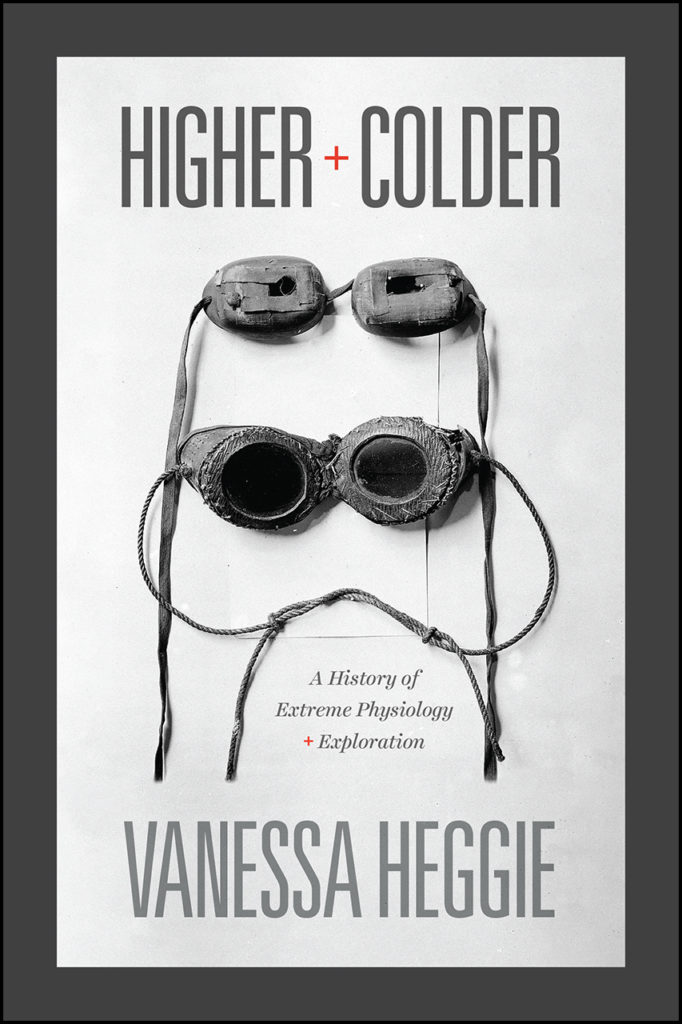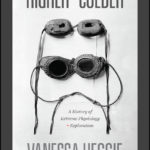Book review: Higher and Colder: A History of Extreme Physiology and Exploration, The University of Chicago Press, 2019, by Vanessa Heggie
Article DOI: https://dx.doi.org/10.15180/201303
Keywords
Exploration, extreme sport, field-work, History of Medicine, history of science, mountaineering, physiology
Review: Higher and Colder: A History of Extreme Physiology and Exploration
https://dx.doi.org/10.15180/201303/002Thinking of Mount Everest is likely to conjure up visions of a natural environment that is both beautiful and terrifying; of explorers attempting to reach the summit, and of solitude in the human encounter with extreme nature. In 2019, a widely circulated photograph showed a different version of Mount Everest, as it depicted numerous mountaineers queuing to stand at the summit of the mountain.[1] This photograph of rush-hour traffic on Everest spurred on calls for more control over the number of people who are allowed to visit the site, in order to counter what some referred to as ‘adventure tourism’ on the mountain (Beaumont, 2019). It seemed to indicate that the influx of visitors were spoiling what had up until then been a natural site where expert mountaineers could challenge nature and themselves, and that past explorers had somehow been more deserving or authentic in their endeavours. This notion is predicated on the idea that mountaineering and exploration had once been acts of solitude, something which Vanessa Heggie masterfully shows has had enduring consequences ̶ not only for our understanding of the history of science and exploration, but for the relationship between the laboratory and the field.
As a study of extremes, Higher and Colder links to broad historiographies of exploration studies and the history of (bio)medicine; areas where historians have often chosen to focus either on the laboratory or the field, or have identified a conflict between the two. Heggie takes fieldwork ‘out of the shadow of the laboratory’, while also highlighting the functional relationship rather than the conflict between the laboratory and field. The focus on extreme physiology is particularly fruitful for such an approach. As Heggie notes, the history of biomedicine has traditionally been told as a story of big science and the laboratory, overlooking the significance not only of field-research but of the way practitioners moved between the ‘lab’ and the ‘field’. As Heggie shows, however, those who were interested in extreme physiology, including both research into what happened to the human body in extreme environments and how to expand the limits of human physical achievements, carried out research both ‘on the mountain’ and ‘in the laboratory’. Indeed, the boundary between the two was highly fluid, something which is particularly clear in Chapter 2, ‘Gasping Lungs’, which focuses on research into altitude sickness and the barometric chamber. The historiographical point about the relationship between the laboratory and the field underpins the entire book, which is organised around six thematic sections, and introduces us to a wide range of historical actors, including Sherpas, university researchers and career-explorers.

The reconsideration of the relationship between the field and the laboratory helps to showcase what was so often excluded in scientific research papers: embodied knowledge and informal networks of knowledge exchange. It was frequently the case that official expedition reports erased or excluded data on organisational and practical aspects of mountain climbing; information which would have been highly significant for future expeditions. Instead, this knowledge was transferred via more informal methods. Chapter 3, ‘Frozen Fields’, looks at the gate-keeping of expeditions, and shows how the transfer of knowledge through specific networks also excluded others, in particular those who were not considered a ‘good chap’, i.e. a very specific type of white male. Indigenous peoples, whose labour and knowledge was central to the success of expeditions was one such group. Another group was women explorers and scientists; although, as Heggie notes, this did not mean that women were not part of the research or the expeditions. The inherent biases in what is considered the ‘normal’ body and body state is further developed in Chapter 5, ‘Blood on the Mountain’, which considers the violent history of polycythemia studies. Throughout the book, Heggie shows that the racialised and gendered assumptions prevalent in physiological research are not limited to the past, but should be a real concern for contemporary researchers as well.
Higher and Colder draws on a range of sources, including non-textual material objects. This is executed well through the book, and in particular in Chapter 4 where Heggie uses the history of pemmican to interrogate embodied knowledge. Just as clothing could be symbolic (shown in Chapter 3) and link the explorer to a specific tradition of research, so too could food. Choosing what food to bring on expeditions was also about signal-value. In the twentieth century, use of pemmican on Arctic expeditions signified that you were an ‘old-school’ and hardy explorer. As Heggie writes, ‘This story arch, from indigenous knowledge to re-appropriated imperial science to traditional marker of a lost, robust, masculine past, can be found in many technologies of survival, and it described, I argue, a form of bioprospecting’ (Heggie, 2019, p 93). Bioprospecting, as this quote indicates, is taken to mean extraction of biological resources, as well as extraction of knowledge. Heggie’s version of bioprospecting is a superb concept for thinking about the many ways in which people have tried to push the boundaries of human physiology.
Higher and Colder is an excellent and well-written book, which will be of great value to anyone interested in exploration and medical research, as well as the material culture of science more generally. My only criticism is that I would have liked more focused examinations of some of the key examples in the text. Higher and Colder covers a lot of ground, and I felt that the importance of some of the examples was not fully expounded. That being said, I would be surprised if the wealth of examples in Higher and Colder did not inspire a lot of new research projects in the future. No doubt, Heggie’s book will become a staple work for historians to use in the years to come.
Tags
Footnotes
Back to text


